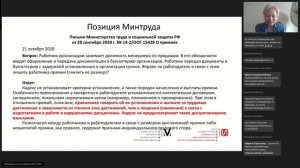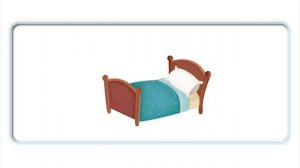
 5:54
5:54
2023-11-22 05:08

 2:14
2:14

 2:14
2:14
2025-09-19 15:42

 0:36
0:36

 0:36
0:36
2025-09-26 18:00

 1:13
1:13

 1:13
1:13
2025-09-25 18:03

 1:57:38
1:57:38

 1:57:38
1:57:38
2025-09-15 15:22

 1:06:32
1:06:32

 1:06:32
1:06:32
2025-09-16 12:56

 2:15
2:15

 2:15
2:15
2025-09-25 22:19

 0:48
0:48

 0:48
0:48
2025-09-21 18:00

 7:40
7:40

 7:40
7:40
2025-09-25 17:00

 5:30
5:30

 5:30
5:30
2025-09-24 07:00

 34:56
34:56

 34:56
34:56
2025-09-12 16:44

 1:23:24
1:23:24

 1:23:24
1:23:24
2025-09-18 12:00

 5:52
5:52

 5:52
5:52
2025-09-25 23:50

 1:50:16
1:50:16

 1:50:16
1:50:16
2025-09-15 14:19

 10:29
10:29

 10:29
10:29
2025-09-22 09:39

 16:17
16:17

 16:17
16:17
2025-09-17 18:32

 8:30
8:30

 8:30
8:30
2025-09-12 15:00

 27:57
27:57
![Tural Everest, Baarni - Ушедший покой (Премьера клипа 2025)]() 3:01
3:01
![Надежда Мельянцева - Котёнок, не плачь (Премьера клипа 2025)]() 3:02
3:02
![Зара - Прерванный полет (Премьера клипа 2025)]() 5:08
5:08
![Мужик из СИБИРИ (Александр Конев) - Не прощу (Премьера клипа 2025)]() 2:39
2:39
![Амина Магомедова - Не пара (Премьера 2025)]() 3:40
3:40
![Анжелика Агурбаш - Утро (Премьера клипа 2025)]() 3:33
3:33
![BITTUEV - Не плачь (Премьера клипа 2025)]() 2:18
2:18
![Алибек Казаров - Чужая жена (Премьера клипа 2025)]() 2:37
2:37
![Мухит Бобоев - Маликам (Премьера клипа 2025)]() 3:18
3:18
![SHAXO - Негодяйка (Премьера клипа 2025)]() 3:27
3:27
![Антон Макарский - Не уходи (Премьера клипа 2025)]() 3:41
3:41
![Зафар Эргашов & Фируз Рузметов - Лабларидан (Премьера клипа 2025)]() 4:13
4:13
![Хабибулло Хамроз - Хуп деб куёринг (Премьера клипа 2025)]() 4:04
4:04
![Сергей Завьялов - В дороге (Премьера клипа 2025)]() 3:14
3:14
![Руслан Шанов - Особенная (Премьера клипа 2025)]() 2:16
2:16
![Иброхим Уткиров - Коракуз (Премьера клипа 2025)]() 4:28
4:28
![Alex Lim, Игорь Крутой - Вокзал (Премьера клипа 2025)]() 3:32
3:32
![Bruno Mars ft. Ed Sheeran – Home to You (Official Video 2025)]() 3:25
3:25
![Евгений Коновалов - Зачем ты меня целовала (Премьера клипа 2025)]() 3:17
3:17
![Слава - В сердце бьёт молния (Премьера клипа 2025)]() 3:30
3:30
![Стив | Steve (2025)]() 1:33:34
1:33:34
![Большой куш / Спи#дили | Snatch (2000) (Гоблин)]() 1:42:50
1:42:50
![Терминатор 2: Судный день | Terminator 2: Judgment Day (1991) (Гоблин)]() 2:36:13
2:36:13
![Плохой Cанта 2 | Bad Santa 2 (2016) (Гоблин)]() 1:28:32
1:28:32
![Однажды в Ирландии | The Guard (2011) (Гоблин)]() 1:32:16
1:32:16
![Фантастическая четвёрка: Первые шаги | The Fantastic Four: First Steps (2025)]() 1:54:40
1:54:40
![Рука, качающая колыбель | The Hand That Rocks the Cradle (2025)]() 1:44:57
1:44:57
![Трон: Арес | Tron: Ares (2025)]() 1:52:27
1:52:27
![Кей-поп-охотницы на демонов | KPop Demon Hunters (2025)]() 1:39:41
1:39:41
![Порочный круг | Vicious (2025)]() 1:42:30
1:42:30
![Код 3 | Code 3 (2025)]() 1:39:56
1:39:56
![Девушка из каюты №10 | The Woman in Cabin 10 (2025)]() 1:35:11
1:35:11
![Властелин колец: Братва и кольцо | The Lord of the Rings: The Fellowship of the Ring (2001) ГОБЛИН]() 2:58:24
2:58:24
![Все дьяволы здесь | All the Devils are Here (2025)]() 1:31:39
1:31:39
![Только ты | All of You (2025)]() 1:38:22
1:38:22
![Карты, деньги, два ствола | Lock, Stock and Two Smoking Barrels (1998) (Гоблин)]() 1:47:27
1:47:27
![Богомол | Samagwi (2025)]() 1:53:29
1:53:29
![Властелин колец: Возвращение бомжа | The Lord of the Rings: The Return of the King (2003) (Гоблин)]() 3:21:07
3:21:07
![Свинтусы | The Twits (2025)]() 1:42:50
1:42:50
![Хищник | Predator (1987) (Гоблин)]() 1:46:40
1:46:40
![Сандра - сказочный детектив Сезон 1]() 13:52
13:52
![Истории Баданаму Сезон 1]() 10:02
10:02
![Умка]() 7:11
7:11
![Рэй и пожарный патруль Сезон 1]() 13:27
13:27
![Тёплая анимация | Новая авторская анимация Союзмультфильма]() 10:21
10:21
![Врумиз. 1 сезон]() 13:10
13:10
![Кадеты Баданаму Сезон 1]() 11:50
11:50
![Игрушечный полицейский Сезон 1]() 7:19
7:19
![Тайны Медовой долины]() 7:01
7:01
![Панда и Антилопа]() 12:08
12:08
![Пиратская школа]() 11:06
11:06
![Лудлвилль]() 7:09
7:09
![Ну, погоди! Каникулы]() 7:09
7:09
![Люк - путешественник во времени]() 1:19:50
1:19:50
![Тодли Великолепный!]() 3:15
3:15
![Сборники «Оранжевая корова»]() 1:05:15
1:05:15
![Псэмми. Пять детей и волшебство Сезон 1]() 12:17
12:17
![Оранжевая корова]() 6:30
6:30
![Таинственные золотые города]() 23:04
23:04
![Приключения Тайо]() 12:50
12:50

 27:57
27:57Скачать видео
| 256x144 | ||
| 640x360 | ||
| 1280x720 |
 3:01
3:01
2025-10-31 13:49
 3:02
3:02
2025-10-31 12:43
 5:08
5:08
2025-10-31 12:50
 2:39
2:39
2025-10-30 11:00
 3:40
3:40
2025-11-05 00:22
 3:33
3:33
2025-11-02 10:06
 2:18
2:18
2025-10-31 15:53
 2:37
2:37
2025-10-30 10:49
 3:18
3:18
2025-11-02 10:30
 3:27
3:27
2025-10-28 11:18
 3:41
3:41
2025-11-05 11:55
 4:13
4:13
2025-10-29 10:10
 4:04
4:04
2025-10-28 13:40
 3:14
3:14
2025-10-29 10:28
 2:16
2:16
2025-10-31 12:47
 4:28
4:28
2025-11-03 15:38
 3:32
3:32
2025-10-31 15:50
 3:25
3:25
2025-11-02 10:34
 3:17
3:17
2025-11-06 12:00
 3:30
3:30
2025-11-02 09:52
0/0
 1:33:34
1:33:34
2025-10-08 12:27
 1:42:50
1:42:50
2025-09-23 22:53
 2:36:13
2:36:13
2025-10-07 09:27
 1:28:32
1:28:32
2025-10-07 09:27
 1:32:16
1:32:16
2025-09-23 22:53
 1:54:40
1:54:40
2025-09-24 11:35
 1:44:57
1:44:57
2025-10-29 16:30
 1:52:27
1:52:27
2025-11-06 18:12
 1:39:41
1:39:41
2025-10-29 16:30
 1:42:30
1:42:30
2025-10-14 20:27
 1:39:56
1:39:56
2025-10-02 20:46
 1:35:11
1:35:11
2025-10-13 12:06
 2:58:24
2:58:24
2025-09-23 22:52
 1:31:39
1:31:39
2025-10-02 20:46
 1:38:22
1:38:22
2025-10-01 12:16
 1:47:27
1:47:27
2025-09-23 22:52
 1:53:29
1:53:29
2025-10-01 12:06
 3:21:07
3:21:07
2025-09-23 22:52
 1:42:50
1:42:50
2025-10-21 16:19
 1:46:40
1:46:40
2025-10-07 09:27
0/0
2021-09-22 20:39
2021-09-22 21:29
 7:11
7:11
2025-01-13 11:05
2021-09-22 23:51
 10:21
10:21
2025-09-11 10:05
2021-09-24 16:00
2021-09-22 21:17
2021-09-22 21:03
 7:01
7:01
2022-03-30 17:25
 12:08
12:08
2025-06-10 14:59
 11:06
11:06
2022-04-01 15:56
 7:09
7:09
2023-07-06 19:20
 7:09
7:09
2025-08-19 17:20
 1:19:50
1:19:50
2024-12-17 16:00
 3:15
3:15
2025-06-10 13:56
 1:05:15
1:05:15
2025-09-30 13:45
2021-09-22 22:23
 6:30
6:30
2022-03-31 18:49
 23:04
23:04
2025-01-09 17:26
 12:50
12:50
2024-12-17 13:25
0/0

